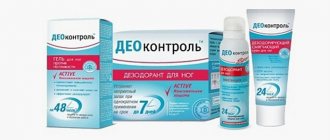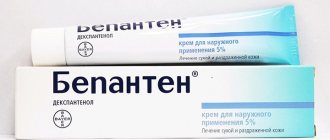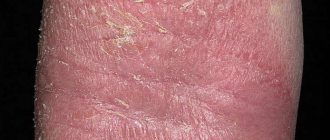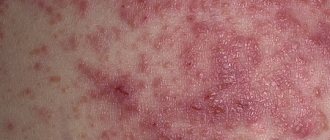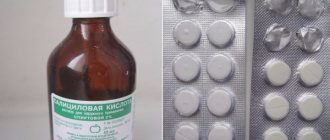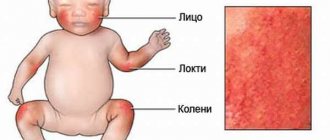Diet for atopic dermatitis in children is very important; the menu must be thought out in advance, taking into account the doctor’s recommendations. This disease causes a lot of inconvenience for both children and their parents. If you follow all the rules of a special diet, the risk of developing the disease is reduced, and unpleasant symptoms also go away. If you choose the right diet and necessary products, your child will completely forget about the skin problem.
Diet is very important for atopic dermatitis in children
What is atopic dermatitis
Alas, atopic dermatitis has absolutely no specific laboratory tests.
markers for diagnosis. Pathology can be identified only by taking into account the same tests with a careful study of clinical symptoms.
The disease is characterized by a recurrent course, that is, characterized by constant attacks, with pauses of calm.
Diet for dermatitis: what you can’t eat and what you can?
Dermatitis is a skin lesion that manifests itself as inflammation and itching. Occurs in response to internal or external causes.
There are different types of dermatitis, but they are all eliminated according to a similar principle - a complex effect on internal causes and removal of external manifestations. One of the components of successful treatment is proper nutrition and diet.
Therefore, in combination with conservative treatment, a specially designed diet for dermatitis is used.
General dietary recommendations
In general, whatever the type of dermatitis, there are general recommendations and restrictions on the composition of the treatment table.
It is necessary to completely get rid of sources of allergens. Here's what you shouldn't eat:
- fruits and vegetables in red and orange colors;
- nuts;
- chocolate;
- baking;
- seafood;
- honey;
- smoked meats, preservatives, pickles;
- chicken eggs;
- fatty fish and meats.
The list may be supplemented with other products that cause individual intolerance. These often include milk and dairy products, as well as sources of gluten (rye, wheat, barley).
You need to monitor the amount of fat in the food you eat. Fatty pork, beef, and fast food increase cholesterol in the blood and affect the condition of the sebaceous glands, which can aggravate existing inflammation. The same can be said about alcoholic drinks of any kind.
When following a diet, you need to exclude from your diet foods that contain large amounts of salt. Their consumption promotes swelling and worsens the general condition. The amount of salt consumed should be strictly dosed and not exceed 3 g.
Greens and vegetables are subject to mandatory heat treatment: they need to be boiled, stewed, steamed. This way they are better absorbed by the body, fermentation processes are prevented, which also affects the condition of the skin.
Recommended for dermatitis are fermented milk products, melons, fruits and vegetables, cereals, and whole grain breads. Eating green apples and pears will be of great benefit.
If a child has dermatitis, special attention should be paid to the consistency of cooked food. It is necessary to exclude from the diet rough foods and dishes that are difficult to digest. Therefore, it is recommended to puree vegetables, puree soups, and serve cottage cheese in the form of cheesecakes or casseroles.
Dependence of nutrition on the type of disease
The diet for any dermatitis has its own nuances, depending on the type of pathology, the degree of damage, and the stage.
In one case, the dietary table has strict restrictions, in others it allows for relaxations in the quality of consumption of certain products.
The list of what you can eat for dermatitis can expand during the course of successful relief from symptoms and vary based on the nature of the disease. Therapeutic diets for each type of dermatitis have their own characteristics.
Allergic
Since this type of dermatitis is a “response” of the skin to a specific food irritant or a combination of them, it is necessary to remove foods that cause an allergic reaction from the diet. In addition, limit your consumption of pickles and sweets.
What can you eat if you have allergic dermatitis:
- It is recommended to eat cereals (buckwheat, rice, corn).
- The diet includes pumpkin, zucchini, watermelon, and potatoes.
- Fermented milk products and lean meat will not cause aggravation.
A diet for facial dermatitis involves using exclusively fresh foods. Before cooking vegetables and fruits, they must be thoroughly soaked - this will reduce the risk of nitrates getting into the food. You should also be careful about the quality of the water you consume - purify it through filters that exclude harmful components, or use purchased drinking water.
Seborrheic
Nutrition for seborrheic type dermatitis requires excluding from the diet all food groups that negatively affect the functioning of the sebaceous glands and skin microflora. These include:
- alcoholic drinks;
- sweet soda;
- fried, spicy, overly salty and sweet foods;
- smoked meats and preservatives;
- baked goods;
- honey, jam.
The diet necessarily includes correction of the drinking ration. It is recommended to drink at least 2 liters of water per day, provided that it is fresh and does not contain harmful impurities. It is necessary to include fermented milk drinks, fresh herbs and vegetables, low-fat jellied meat, jelly, jelly, lean pork and other types of dietary meat in the treatment table.
A diet for dermatitis is a set of foods that does not burden the liver. If harmful components come with every portion of food, it may not cope at all.
If the occurrence of dermatitis is associated with disorders of the nervous system (stress, insomnia), then the diet can include the use of decoctions of chamomile, valerian, motherwort and other medicinal herbs.
Dühring's disease
Dühring's dermatitis has its own specific origin. As a rule, the pathology is associated with increased sensitivity of the body to gluten, contained in many cereals. The dietary table for this disease, as well as the general diet for dermatitis in adults and children, prohibits the consumption of gluten-containing products.
In case of Dühring's disease, it is prohibited to consume semolina, rye, wheat, oat and barley cereals, legumes such as beans, lentils, beans and peas, as well as dishes containing their derivatives:
- liquid dishes with flour or malt (gravies, soups, sauces);
- flour products, including pasta, cakes, and semi-finished products containing dough;
- breaded dishes;
- cereal-based drinks (beer, kvass, barley coffee);
- chocolate with cereal fillings and ice cream.
The list of acceptable products includes:
- dishes with added rice and corn;
- low-fat kefir, fermented baked milk, hard cheese, low-fat cottage cheese;
- milk (up to 0.5 l per day), butter;
- all fruits;
- fresh herbs;
- nuts;
- spicy seasonings;
- green vegetables;
- honey;
- lean varieties of meat and fish.
Atopic
The nature of this type of dermatitis has not yet been fully elucidated. Doctors associate the pathology with reduced immunity, exhaustion of the nervous system, liver problems, hereditary disorders or the presence of food allergies.
The disease is chronic and manifests itself in outbreaks, so a hypoallergenic diet for dermatitis is followed constantly, with relief during the period of remission.
A diet for atopic dermatitis is prescribed with a low calorie content. There is a certain list of foods that definitely need to be excluded from the diet. First of all, these are alcoholic drinks and products that contain ethyl alcohol.
You should not eat smoked foods; you should not add too much salt or pepper to your food.
This diet excludes the consumption of all allergenic foods. Preservatives, smoked foods, alcohol, fried and fatty foods, processed foods, sausage, and gluten-containing foods are not recommended.
It is allowed to include lean boiled meat, melons, fermented milk products, potatoes and corn, berries, green fruits, and the addition of a small amount of whole milk and meat by-products into the diet.
The diet is regulated taking into account the individual characteristics of the immune system, which can give a negative reaction to any product, even not considered an allergen.
Other types
Other types of the disease with characteristic skin rashes are also treated with dietary adjustments. Limiting dietary factors are regulated based on the individual characteristics of the body.
Thus, the diet for contact dermatitis excludes the direct allergens that caused the disease, as well as the above-mentioned allergenic dishes. It is recommended to eat greens, fresh vegetables, cereals, fermented milk products, cereal soups, and lean meat. For hand skin lesions or perioral dermatitis, the diet is based on therapeutic nutrition, which improves intestinal function.
Sample menu
Based on general recommendations for a diet for dermatitis in adults, we can offer several simple and tasty menu variations for dermatitis.
Breakfast options:
- Oatmeal and black tea, to which you can add lemon balm or mint.
- Compote of fresh apples, cheesecakes made from low-fat cottage cheese, seasoned with non-acidic sour cream 5% fat.
- Green tea, sandwiches made from bread and hard low-fat cheese, assorted greens (lettuce, parsley, dill).
Lunch options:
- Vegetarian soup (no meat used), buckwheat, seasoned with beef liver. Oatmeal jelly, whole grain bread.
- Noodle soup with turkey, cooked in a weak broth. Rice with veal chops. Fresh apple compote.
- Puree vegetable soup, diet meat stew with mashed potatoes, weak black tea.
Dinner options:
- Boiled or steamed lean fish, fresh white cabbage salad, pear compote.
- Vegetable stew, weak tea.
- Fish casserole with fresh cucumbers. Chamomile tea.
Between main meals, snacks in the form of fermented milk drinks or 1-2 green fruits are possible.
These menu options for dermatitis are advisory in nature and vary depending on the specific type of disease. They can be adjusted to suit the characteristics of each specific patient.
An approximate dietary table differs slightly between children and adults in the methods of food preparation, the number of prohibited and permitted foods. In diet therapy for children, in addition to general recommendations and restrictions, much attention is paid to the consistency and temperature of dishes. It is recommended to prepare easily digestible dishes – vegetable puree, steamed cutlets. Dishes are served warm.
A specially designed treatment table will speed up the recovery period. It is only important to follow the mandatory recommendations and dietary restrictions.
Source: https://tden.ru/health/dieta-pitanie
Symptoms and causes of the disease
Atopic dermatitis belongs to a heterogeneous group and occurs in most cases against the background of allergic reactions, such as:
- eczema;
- hives;
- toxidermy.
The psycho-emotional stress on a person is of no small importance in the development of the disease. Poor nutrition and poor ecology can be provocateurs; these two factors are especially dangerous for children.
In addition to all these provocateurs, genetics is of great importance. Scientists have long been able to establish that if both parents have never had dermatitis, then the probability of the child developing the disease is 20%, even less. But, if at least one of the parents has encountered an acute form of the pathology at least once, and even more so has a chronic form of atopic dermatitis, then the child’s risk of developing such a disease increases to 50 percent or more. And if both parents also have the pathology, then the risk increases to 80%.
There are a number of main and additional symptoms on the basis of which the diagnosis is made. The main criteria include:
- constant skin itching;
- characteristic places for rashes, in children this is the face and extensor surfaces of the limbs, in adults - the flexor surfaces of the limbs;
- constant remissions and exacerbations of the disease;
- severe dryness of the skin, especially in areas of the rash;
- increased levels of immunoglobulin.
Less common are nipple eczema and recurrent conjunctivitis.
The danger of the disease is that there is a huge risk of developing superinfection, that is, a secondary form of the disease. Simply put, all kinds of bacteria can get into wounds, for example, streptococci, staphylococci. Hence the appearance of esfoliative dermatitis.
The role of nutrition during exacerbation of the disease
Remission of atopic dermatitis can last for years. Then, under the influence of a stress factor or allergen, the rashes resume. Some patients benefit from hormonal ointments and creams, while others do not. This point depends on the individual characteristics of each person.
Normalizing nutrition and eliminating foods with a high probability of an allergic reaction helps 90% of people. Almost none of those who completely switched to a simple and healthy diet remembered the symptoms of atopic dermatitis.
There is a theory that eczema and dermatitis of various etiologies arise due to impaired functioning of liver cells, at the beginning of fatty degeneration of the organ. This theory has not been officially confirmed. But if we assume that it is true and the causes of atopic dermatitis are precisely impaired liver function, then the benefits of a therapeutic diet menu for atopic dermatitis in adults become obvious. Eliminating fatty foods and foods that have a toxic effect on hepatocytes improves the functioning of the organ and improves the condition of the skin.
Types of diets for atopic dermatitis in adults
Depending on the stage and severity of the inflammatory process on the skin, local treatment is prescribed. If necessary, the doctor prescribes antibacterial and antifungal treatment.
Along with this, special nutrition is prescribed, which will allow you to quickly cope with the problem and prevent an exacerbation.
Then a special diet is prescribed. You should not prescribe your own diet, as it must be balanced, and without proper education, you can miss something and harm your health. There are two types of diets: rotational and elimination.
There is also an anti-allergenic diet, which is prescribed exclusively by a doctor and when the trigger of an exacerbation is precisely identified.
During treatment, it is necessary to reduce the amount of foods that negatively affect liver function. These include fats, especially animal fats.
Nutrition and diet for dermatitis on the hands, face and body
/ Health / Diet / Treatment / Skin / Nutrition and diet for dermatitis on the hands, face and body
Diet for dermatitis is an important component of treatment. Wrong eating habits often lead to relapses. Therefore, experts insist that the menu needs to be reviewed from time to time.
Skin lesions on the hands, face and body in adults
Dermatitis is manifested by rashes on the skin of the face, hands and other parts of the body, as well as itching and burning in the affected areas.
The main cause of the disease is skin contact with substances that are irritants. Food allergens can also aggravate dermatitis.
In this case, a characteristic feature is rashes that are not localized at the points of contact of the epidermis with external irritants.
Nutrition
Regardless of the type of disease, the diet should be based on the following principles:
- Highly allergenic foods are excluded from the menu.
- Food should be homemade and natural.
- Dishes can be boiled, baked, steamed. Frying should be avoided.
- The use of salt and spices is minimized.
- You need to eat small meals at least four times a day. The last meal should be at least 3-4 hours before bedtime.
- You need to drink enough water
- White bread should be replaced with whole grain bread.
- It is useful to add bran to food.
- Vegetables and hypoallergenic fruits containing fiber are recommended, including green apples.
Interesting article: Hypoallergenic diet for atopic dermatitis
In the atopic form, a classic diet is indicated with the gradual elimination from the diet of foods that can provoke allergies. You can consume some fruits and fresh juices from them.
Red and orange fruits and vegetables are excluded. It is recommended to eat apples, pears, plums - they help cleanse the body and treat the disease. Useful cereals include rice, oatmeal, and pearl barley.
Allergic dermatitis involves strict prohibitions. All prohibited allergenic foods must be eliminated. If a food is found that provokes unpleasant symptoms, it must be excluded.
Fatty, spicy, salty foods are prohibited. Fermented milk products, seasonal vegetables and fruits are useful. With seborrheic dermatitis, allergens are also limited.
New products are introduced gradually, every 2-3 days, with response monitoring.
Dühring's dermatitis is a persistent chronic disease caused by incomplete absorption of gluten. Any food containing wheat, flour, malt components, sweets, or semi-finished products is prohibited. You also need to exclude legumes, grains, cabbage, pasta, and sausages.
For contact dermatitis, the diet is similar to the menu for allergic forms. To remove allergens, you need to drink a lot of water.
What can you eat?
The menu for dermatitis is based on hypoallergenic products that promote faster renewal of skin cells and restoration of the body.
These include the following:
- porridge with water (oatmeal, rice, millet, buckwheat, pearl barley);
- vegetables (cabbage, turnips, zucchini, cucumbers, squash);
- boiled lean meat (chicken, turkey, rabbit, beef);
- non-allergenic fruits rich in fiber and vitamins (unsweetened green apples, plums, white currants, watermelon);
- fermented milk drinks (kefir, cottage cheese, natural sourdough yogurt);
- some types of fish containing high amounts of omega-3;
- seaweed;
- vegetable oil (up to 30 grams per day);
- green tea, herbal infusions, homemade compotes and fruit drinks.
It is also important to drink enough water - it helps remove toxins from the body and speed up recovery processes.
What should you not eat?
All foods considered allergens are usually excluded from the diet. These include the following:
- Honey. It cannot be consumed in its pure form or added to various dishes and drinks.
- Eggs. Although this is a healthy product in principle, it can easily cause allergies. It is especially important to limit their use for dermatitis in children.
- Cocoa. This drink increases the load on the liver and can cause an exacerbation of dermatitis.
- Whole milk. It is also an allergen and can cause a relapse.
- Nuts. All types are excluded.
- Citrus. Despite their benefits, these are highly allergenic products. Exotic fruits of red and orange colors are also prohibited.
Also, an exacerbation of the disease can be provoked by the consumption of smoked, fatty, fried, pickled foods. Seafood, caviar, and fatty meat are excluded. Spices, salt and sugar are limited. Do not drink alcohol, sweet juices, or carbonated drinks.
Each person’s body is individual, and you need to monitor the reaction to specific products. If a certain dish provokes signs of the disease, it must be excluded.
Menu for the week
The diet will depend on the characteristics of the patient’s body and the type of dermatitis.
The main thing is to exclude harmful foods from your diet and build it taking into account all the rules.
Below is a sample weekly menu for patients with dermatitis.
Monday
- Breakfast: buckwheat, whole grain bread with butter, tea.
- Lunch: vegetable soup with sour cream, boiled meat, rice.
- Afternoon snack: baked apple.
- Dinner: steamed fish cutlets, cucumber and herb salad, tea.
Tuesday
- Breakfast: oatmeal with dried fruits, low-fat cheese, tea.
- Lunch: soup with noodles, buckwheat with meat, fruit juice.
- Afternoon snack: kefir.
- Dinner: stewed potatoes with liver, cabbage salad, jelly.
Wednesday
- Breakfast: rice, cottage cheese, tea.
- Lunch: soup with meatballs, steamed lean meat, stewed cabbage.
- Afternoon snack: natural yogurt.
- Dinner: boiled potatoes with a little butter, steamed cutlets, tea.
Thursday
- Breakfast: oatmeal, buttered bread, herbal tea.
- Lunch: vegetable soup, pilaf, homemade compote.
- Afternoon snack: pear.
- Dinner: rabbit stew with vegetables, sour milk.
Friday
- Breakfast: mashed potatoes, vegetable salad, cheese, tea.
- Lunch: puree soup with zucchini, steamed cutlets, rice, berry juice.
- Afternoon snack: yogurt.
- Dinner: steamed meatballs, boiled potatoes.
Interesting article: Features of the diet for Zhiber rosea
Saturday
- Breakfast: toast with low-fat cheese and herbs, tea.
- Lunch: buckwheat soup with meat broth, stewed cabbage, beef liver, jelly.
- Afternoon snack: jelly.
- Dinner: potatoes baked with zucchini, a glass of kefir.
Sunday
- Breakfast: zucchini caviar, whole grain bread, homemade juice.
- Lunch: vegetable soup, meat balls, buckwheat, compote.
- Afternoon snack: cottage cheese with added dried fruits.
- Dinner: boiled fish, vegetable salad, tea.
We invite you to watch a popular video on how to cure dermatitis:
A proper diet for dermatitis is the key to a speedy recovery. It will help remove allergens from the body and speed up recovery processes. The diet can be compiled at your own discretion, but taking into account all the recommendations.
Source: https://pitanie.plus/zdorove/dieta/lechebnaya/kozha/dermatit-d.html
Rotation diet
This nutritional system is prescribed for acute atopic dermatitis. Its main purpose is to identify food allergens. The diet is varied, but each new product appears on the menu only for 4 days. This approach will allow you to identify the allergen, because at the same time you keep a food diary, which records the body’s reaction to a particular product.
The diet is built on the basis of products that are normally tolerated in the future. This allows you to avoid further exacerbation of the disease.
How to plan a diet for one month
In the above example of a diet menu for dermatitis in adults, you can safely swap dishes. The main condition is not to use allergenic foods and drinks. If the patient constantly violates the principles of therapeutic nutrition, improvement in skin condition may not be expected.
To ensure that the body does not lack any nutrients, a balance of fats, proteins and carbohydrates should be maintained. Any product contains predominantly one of these components. For example, veal and recipes with this meat are rich in proteins; the meat contains no carbohydrates and low fat content. Vegetables and fruits are pure carbohydrates. Any person who monitors their diet knows this information and uses it when creating a menu.
The menu for dermatitis in adults should be based on the constant use of the following products:
This is the basis of the diet, its “backbone”. From these products alone you can create a fairly varied menu.
The weekly menu for atopic dermatitis described above is a classic example of a hypoallergenic diet. In some patients, for example, red apples do not worsen the condition. In this case, you can safely add them to your diet. Or, for example, eating beets also does not always cause an exacerbation of the disease. So the key factor when creating a diet menu for atopic dermatitis is the individual characteristics of the patient.
Features of the diet for adults and teenagers
If it was not possible to get rid of atopic dermatitis in childhood, then you will have to follow the prescribed diet throughout your life. Its main principle is the exclusion of all products that can cause allergies.
You will have to give up any dishes that have a pronounced taste. These are spicy, hot, salty and sour dishes. Vegetables and fruits are allowed in the diet, but they are chosen according to the season. You need to eat 4-5 times throughout the day. We must not forget about the drinking regime and drink about 1.5 liters of free liquid throughout the day.
Modern methods of treating atopic dermatitis
A vaccine has not yet been found that would allow patients to forget about the manifestations of the disease once and for all. There are two areas of therapy:
Even against the background of ideal nutrition, dermatitis can manifest itself: this happens during periods of severe stress, nervous shock, and great nervous stress. The patient should not only adjust the diet, but also monitor the psycho-emotional background. It must remain level in any situation; psychotic conditions and nervous breakdowns should not be allowed; the symptoms and treatment of atopic dermatitis depend on this.
Features of the diet for pregnant and lactating women
If the expectant mother has atopic dermatitis, she should especially pay attention to her diet so as not to provoke an exacerbation in herself and try to avoid the disease in her unborn child. To do this, a woman should carefully follow all the recommendations of the doctor accompanying her pregnancy.
Even if a woman has a tendency to develop allergies, she will have to give up a number of foods: eggs, especially raw eggs, milk, or limit it to 2 glasses per day, chocolate, sugar and honey, sausage and nuts. That is, from any provocateurs of an allergic reaction. It is not allowed to consume products that, even after heat treatment, do not reduce their allergenicity.
To reduce the risk of dermatitis, probiotics are administered in the last weeks of pregnancy and during breastfeeding. They play a huge role in the primary prevention of allergies.
Meals for one day
Menu for atopic dermatitis in adults per day during exacerbation or remission:
- Breakfast should include complex carbohydrates, which will provide an energy boost until lunch. Ideal porridges: buckwheat, oatmeal, pearl barley. Adding dried fruits, butter, full-fat milk or flavorings is prohibited. Porridge should be cooked with water or skim milk. If the patient tolerates sugar and salt well, you can add them. For breakfast, you can also eat protein omelettes, fruit smoothies (for example, banana or kefir), and green apples baked in the oven.
- The snack should satisfy your protein needs. If the patient feels a loss of energy, you can eat carbohydrates. The ideal snack is a package of diet bread or a pack of low-fat cottage cheese.
- Lunch is the main meal. Lenten borscht, okroshka with low-fat kefir, and pureed light vegetable soup (potatoes, cauliflower, leeks, turnips) are ideal. For the second course there must be a meat dish: veal goulash, lean beef, turkey. For dessert - one banana or green apple.
- Dinner should be predominantly protein. A piece of fish fillet (chum salmon, pink salmon, mackerel, cod), baked on the grill or steamed, is ideal.
Features of the diet for babies
Diet in infancy in the presence of atopic dermatitis is based on several principles:
- complete exclusion of causally significant allergens;
- removing from the diet any foods that contain preservatives, dyes and other extractive substances;
- replacing harmful products with adequate natural ones, depending on the baby’s age.
Also, mom should always remember that not all rashes are a consequence of atopic dermatitis, so you should definitely visit your doctor regularly.
Under no circumstances should a nursing mother give up lactation; with breast milk, the baby receives complete nutrition, without any allergens.
There is no need to rush into complementary feeding; it should begin no earlier than 5-6 months from birth. Start complementary feeding with grated boiled vegetables. After that, fruits begin to be introduced, and at the very last stage meat and dairy products. And at the very end, products that can cause allergies are gradually introduced.
Principles of nutrition for atopic dermatitis
For atopic dermatitis, nutrition is based on a number of rules. Otherwise, a rash appears under the influence of allergens. The basic principles are as follows:
- Fractional meals. This rule suggests that you need to eat often, but in small portions.
- You need to eat as you wish. You shouldn’t force your baby if he doesn’t want to yet.
- All foods that can cause allergies should be excluded from the diet.
- The diet for children is strictly observed during the period of treatment and recovery.
- It is recommended to keep a baby food diary. This will help parents figure out what exactly causes the child’s body to react undesirably. It is necessary to make notes about meal times, list dishes and record reactions to them.
- The food taken is low-calorie, but at the same time the child’s body must receive the necessary vitamins and elements. So your diet should always include meat and fish dishes, cereals, dairy products, herbs, berries, vegetables and fruits.
- The menu should consist of dishes that are prepared at home. Convenience foods, fast food and canned food are prohibited.
- If you have a tendency to diathesis, then the amount of salt and sugar will have to be limited.
- When the disease worsens, it is not recommended to take vitamin and mineral preparations.
- During an exacerbation, you need to avoid foods that contain histamine.
- All products are subject to heat treatment.
- Be sure to monitor your child’s drinking regime. During illness, he must drink more to remove harmful substances from the body. Regular clean water will do. Compote and tea are also allowed.
If you follow these rules, your child will not have any health problems.
List of prohibited products
The list of strictly prohibited products for use in atopic dermatitis includes:
- vegetables: tomatoes, carrots, sorrel, radishes, beets, rutabaga, celery;
- offal: boiled sausages, sausages, sausages, pork, chicken broth;
- from seafood you will have to give up crustaceans, red and black caviar, and canned fish;
- dairy products: milk, processed and cream cheese, cream, cheese with hot spices;
- fruits: it is best to avoid those that are red in color, peaches, persimmons, melons, citrus fruits, grapes and cherries;
- cereals: wheat and semolina;
- sweets and bread: cakes with cream, ice cream, gingerbread, chocolate and any baked goods, honey.
As for drinks, you should avoid all carbonated drinks, alcohol, jelly, coffee and cocoa.
Sample menu
A child’s menu for atopic dermatitis depends on his age. For children from six months to one year, the feeding schedule will be as follows:
- The first feeding involves only drinking breast milk or a special formula (it must be hypoallergenic).
- Second feeding - you can give applesauce, which is made from green fruits. Dairy-free porridge is also allowed, to which you need to add a little breast milk. It can be replaced with soy mixture with a small amount of vegetable oil.
- Third feeding - the baby should be given puree (vegetable, fruit or meat). Its preparation will not cause any difficulties.
- The fourth feeding is pureed meat or fruit. It can be replaced for variety with rice (or buckwheat) with zucchini and cauliflower.
- The fifth feeding is a hypoallergenic formula or breast milk.
The menu for older children changes by day:
- Monday. For breakfast, buckwheat porridge is given, which is cooked in water. You can add a little olive oil to it. Wash it down with black tea. For lunch you need to eat soup with potatoes, which is cooked in beef broth (and the fat itself should be secondary). Wash down with apple compote. For dinner, you can also offer many different dishes. For example, millet porridge is suitable, followed by boiled beef. Wash it down with tea. Additionally, you can snack on an apple.
- Tuesday. You can choose many dishes for breakfast, but it is best to give your child buckwheat porridge again. Moreover, you don’t have to cook it, but simply fill it with water overnight, and add a little rapeseed oil in the morning. Drink tea, but without sugar. For lunch, vegetable dishes will be appropriate. For example, pureed soup made from cabbage, potatoes, and onions is perfect. It is allowed to add a little ground boiled beef. Wash everything down with compote. For dinner, you should choose one of the rice-based dishes. For example, you can simply soak rice in water. This option is optimal. Wash it down with tea or compote.
Proper nutrition of children with atopic dermatitis is the key to recovery
- Wednesday. For breakfast, liquid rice porridge is suitable, accompanied by a small piece of cheese (low-fat and mild). For lunch there is soup again, but made with potatoes and sour cream. Additionally, meat puree is served with soaked or boiled rice. Wash it down with compote. For dinner you can choose several dishes. For example, steamed meat cutlets and mashed potatoes are suitable.
- Thursday. In the morning, you are given mashed potatoes, fresh cabbage seasoned with olive oil, and bread with cheese. Wash it down with tea. For lunch - cabbage soup cooked with fresh cabbage and steamed meat balls. Wash it down with compote. In the evening there are cabbage rolls, cottage cheese and tea.
You should not choose overly complex recipes; food should be easy to prepare. Snacks are a must. Vegetables, fruits, cottage cheese, kefir are suitable for this.
List of approved products
It is allowed to introduce products that have the lowest allergenic activity. These include:
- beef, but only lean parts;
- cereals, pearl barley and rice;
- oatmeal;
- offal;
- pumpkin;
- apples, but only green;
- boiled chicken;
- white currants;
- turnip;
- squash;
- pears;
- watermelon;
- dried fruits.
The best vegetable oils are sunflower and olive oils.
Patient diet
A properly formulated diet for allergies increases the speed of recovery. It is also an excellent prevention of allergic reactions. If a person is diagnosed with allergic dermatitis, he should definitely change his diet.
For every allergy, diet is considered a very effective and effective method to stop the course of the infection and its relapses in the future.
Some people mistakenly believe that a diet is a strict restriction from all their favorite foods. This opinion is far from the truth. You should not eat only those foods that can provoke the development of an allergic reaction, and there are not so many of them. If you approach the preparation of your diet with imagination, it will be quite varied.
However, you should not decide on your own what you can eat and what you should not eat. It is better to contact an experienced nutritionist who will create a diet in an individual case and decide for himself which foods are allergens for your disease and which should not be eaten.




